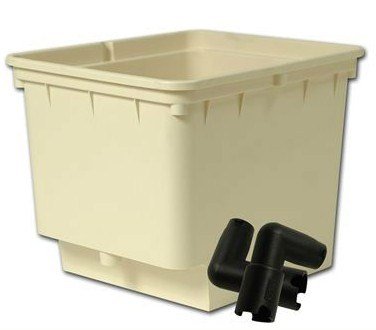

Peruvian Seabird Guano provides the best quality in organic fertilization and is ideal for organic gardening. It originates from Peruvian seabirds and is made into dry pellets. The limiting factor here has clearly to do with space, because of the size of individual eight-gallon buckets. The buckets have drains and water level markers, which make cleanup and reservoir refills simpler.īecause of the scalable and simple design, you easily can add more buckets to expand the system. The PowerGrow system’s assembly and maintenance are mostly easy. The bucket lids have large six-inch net cuts able to house entirely mature fruit plants and vegetables. It comes complete and needs just grow lights to begin nurturing the plants. This system tries to differentiate itself from the competitors by including air stones to every bucket. Separate air lines are used to connect the buckets to a central air pump.
Bato bucket system full#
The PowerGrow DWC system has 8 individual buckets, each able to grow a plant to full maturity. This system works by using large five-gallon buckets for their deepwater system.
Bato bucket system plus#

Also, a timer is utilized to activate the delivery system on a wanted schedule. In a compact hobby-sized system, frequency is going to vary from a couple of days to each day to make sure that the plants will be fed as required.Ī distribution system consisting of stabilizer stakes, emitters, a pump, emitter lines, and a feed line is used to deliver fertilizer solution to the Dutch Buckets. The rate of mixing and diluting fertilizer in a reservoir system is determined by the reservoir’s size as well as the number of plants and buckets in the system. A central fertilizer reservoir is used to feed the Small Dutch Bucket.Ī reservoir system is far more affordable compared to the injector systems frequently used to feed bigger commercial Dutch Bucket systems. It requires just a little more time, which is being spent each week or month to create the liquid fertilizer concentrates. When you have the concentrate pre-made and available, it will reduce the time needed for fertilizer mixing in the reservoir. Whenever you buy dry fertilizers for the system, you can dilute them into a concentrate solution, which you can dilute to the final feed solution in the reservoir as required. In case you choose not to mix fertilizer on a daily basis, make the reservoir big enough to mix 2 or 3 days’ worth of fertilizer solution at one time.

When you want to figure out the size of a reservoir for a Dutch Bucket system, make available 1 to 2 gallons of reservoir capacity per bucket daily. Whenever the nutrient solution is run through the system, the reservoir in every bucket is refilled and then overrun just enough to make sure that the reservoir has only fresh solution.


 0 kommentar(er)
0 kommentar(er)
